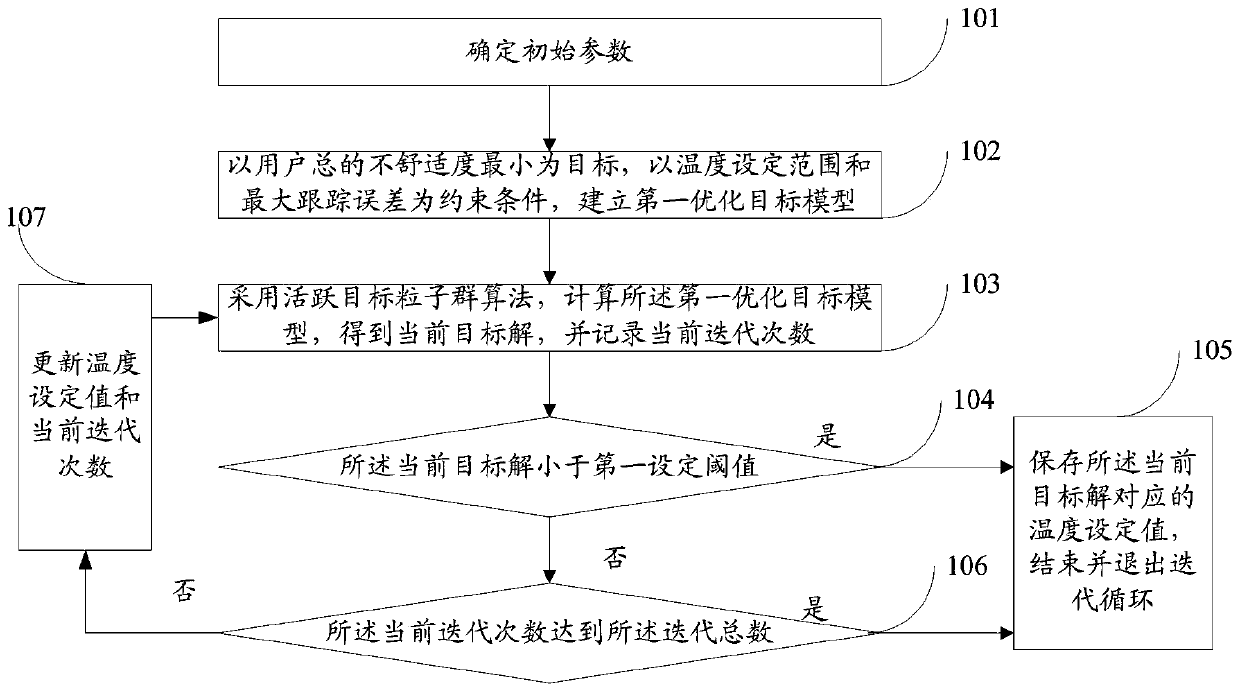Coordinated optimization method and system for temperature control load comfort and frequency regulation
A technology of collaborative optimization and frequency adjustment, applied in information technology support systems, power network operating system integration, reducing/preventing power oscillations, etc., can solve the inability to achieve the compromise optimization between power supply quality cost and user comfort, and does not consider frequency adjustment. Deviation, service cost and internal constraints of user comfort, affecting user frequency adjustment service fairness and other issues
- Summary
- Abstract
- Description
- Claims
- Application Information
AI Technical Summary
Problems solved by technology
Method used
Image
Examples
Embodiment 1
[0113] Such as figure 1 As shown, this embodiment provides a method for collaborative optimization of temperature-controlled load comfort and frequency adjustment, which specifically includes:
[0114] Step 101: Determine initial parameters; the initial parameters include the total number of iterations, the temperature setting value range, the maximum tracking error, the first setting threshold and the initial temperature setting value.
[0115] Step 102 : taking the minimum total discomfort of the user as the goal, and taking the temperature setting range and the maximum tracking error as constraints, a first optimization target model is established.
[0116] Step 103: Using the active target particle swarm optimization algorithm to calculate the first optimization target model, obtain the current target solution, and record the current iteration number.
[0117] Step 104: Judging whether the current target solution is smaller than a first set threshold, and obtaining a firs...
Embodiment 2
[0137] Such as figure 2 As shown, this embodiment provides a temperature control load comfort and frequency adjustment collaborative optimization system, specifically including:
[0138] The initial parameter determination module 201 is configured to determine the initial parameters; the initial parameters include the total number of iterations, the range of the temperature setting value, the maximum tracking error, the first setting threshold and the initial temperature setting value.
[0139] The first optimization target model establishment module 202 is used to establish a first optimization target model with the minimum total discomfort of the user as the target and with the temperature setting range and the maximum tracking error as constraints.
[0140] The current target solution obtaining module 203 is configured to use the active target particle swarm optimization algorithm to calculate the first optimization target model, obtain the current target solution, and rec...
Embodiment 3
[0146] Such as image 3 As shown, this embodiment provides a method for collaborative optimization of temperature-controlled load comfort and frequency adjustment, which specifically includes:
[0147] Step 301: Determine initial parameters; the initial parameters include the total number of iterations, the temperature setting value range, the maximum tracking error, the second setting threshold and the initial temperature setting value.
[0148] Step 302: Taking the minimum discomfort degree of users in the largest group as the goal, and taking the temperature setting range and the maximum tracking error as constraints, a second optimization objective model is established.
[0149] Step 303: Using the active target particle swarm optimization algorithm to calculate the second optimization target model, obtain the current target solution, and record the current iteration number.
[0150] Step 304: Judging whether the current target solution is smaller than the second set thre...
PUM
 Login to View More
Login to View More Abstract
Description
Claims
Application Information
 Login to View More
Login to View More - R&D
- Intellectual Property
- Life Sciences
- Materials
- Tech Scout
- Unparalleled Data Quality
- Higher Quality Content
- 60% Fewer Hallucinations
Browse by: Latest US Patents, China's latest patents, Technical Efficacy Thesaurus, Application Domain, Technology Topic, Popular Technical Reports.
© 2025 PatSnap. All rights reserved.Legal|Privacy policy|Modern Slavery Act Transparency Statement|Sitemap|About US| Contact US: help@patsnap.com



